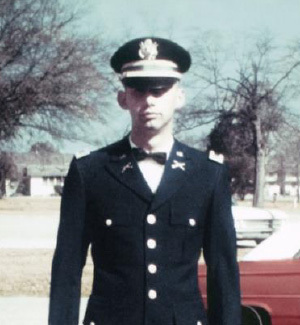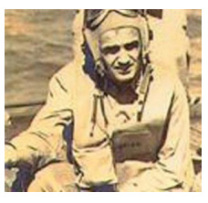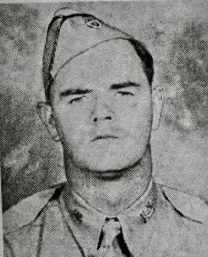The following is an edited excerpt of the life narrative that will be read during the 2023 Gold Star Hall Ceremony.

James Lee Miller
James Lee Miller, known as Jim, was born on June 25, 1943, to Bill and Dorothy Miller. Five years later, Jim was joined by brother John, born on Dec. 6, 1948. They were the only children of their parents, and John described their relationship to be “as close as it could be for two people five-and-a-half years apart in age.” Together they enjoyed a rich and rewarding life growing up, involving traveling, camping, meeting new friends, contributing to their communities and spending quality family time together.
While growing up, Jim’s family moved around quite a bit. His father, Bill, was a carpenter and later a construction project manager. They traveled to where the work took them. During WWII, Bill served with the U.S. Army in Italy, a member of the “Blue Devils,” the 88th Infantry Division. After WWII, Bill worked for the DuPont Company in Clinton. DuPont transferred Bill to Sellersburg, Indiana, in 1952 to work at the Indiana Ordnance Works during the Korean War.
Jim began high school at Silver Creek High School in Speed, Indiana. In the summer of 1959, the family moved to Terceira Island in Portugal and lived on the Lajes Air Force base a joint forces base involving the Portuguese Air Force, U.S. Air Force and U.S. Navy. Bill oversaw the building of a new airmen’s dormitory and the lengthening one of the base’s runways, and Dorothy found part-time jobs and churches where the family could socialize, meet people and attend regular activities.
While John attended sixth grade in a newly constructed elementary school, Jim completed eleventh grade in old WWII Quonset huts that were converted into classrooms. In the summer of 1960, his family traveled through Portugal, Spain, France and Canada. Jim was never short of opportunities to explore the world.
In 1961, the family moved to Sykesville, Maryland, and Jim started his freshman year at Iowa State University in the fall, enrolling in the College of Agriculture. He was also a member of the Army ROTC.
Given his many years of moving and starting over in new places, Jim knew how to keep himself busy and involved in each community he found himself a part of. While a student in Ames, Jim was a resident of Griffith House in the Westgate dormitory. He developed close friendships with some of his dorm mates and frequently went home with them for weekends and holidays rather than traveling back to Maryland where his family was living. During his years in Indiana and Maryland, Jim developed a love for hunting and fishing. So, when he went home with his dorm mates, he enjoyed the great outdoors while hunting and fishing in Iowa.
Jim was not at Iowa State for long before he joined his family in Alaska. Jim chose not to return to the “Lower 48” at the end of that summer. He enrolled in the University of Alaska, majoring in business administration and graduated in 1966. While at the University of Alaska, Jim was enrolled in the Army ROTC unit on campus, achieving the rank of cadet major. He was also executive officer for the unit and received the “Distinguished Military Student” Award. With this experience, he had found his new calling – following in his father’s military footsteps.
Perhaps due to his constant moving, Jim never married and was devoted to his career in the Army. In 1966, he received an official Army commission. Jim went through advanced infantry training at Fort Benning, Georgia, going on to an Army Ranger training course. He remained at Fort Benning until he was deployed to Vietnam.
Just before his deployment, he went home to Seaford, Delaware, to visit his parents. He stopped in Ames to visit his brother John, who was in his sophomore year at Iowa State, majoring in engineering science. That fall quarter, John was living in Wallace Hall. Little did he know it at the time, but it would be the last time that he would see his brother.
Jim was assigned platoon leader for the 1st Platoon of Company C, 4th Battalion, 9th Infantry, of the 25th Infantry Division in Vietnam. He reported to his unit in the Cu Chi area on Oct. 10, 1967, northwest of the city of Saigon, or Ho Chi Minh City as it is known today. This was the base camp for the 25th Infantry Division. His first letter home indicated he was so tired the first night from traveling straight through from Ames to Saigon that he slept through an artillery barrage that landed 200 meters away. Jim moved fast up the ranks and was promoted to 1st lieutenant in early October of 1967.
Later his unit moved to the region around Tay Ninh, Vietnam, which is approximately 50 miles northwest of Saigon. His last known activity was penetrating the perimeter of an enemy base camp near Katum Airfield. His platoon was in reserve to support another unit leading into the area. The forward platoon came under heavy mortar attack and suffered many casualties. Jim and his radio telephone operator unit moved forward to take command of the remaining troops and withdraw them to a safer position.
However, during this maneuver, Jim suffered major shrapnel wounds while trying to save another officer and died on Dec. 14, 1967, in the Vietnam 45th Surgical Hospital. His family first heard the terrible news by telegram.
His brother John said, “When he was in college, before he was commissioned to go into the Army, he said his first choice was Vietnam because ‘it was just something I had to do.’ He fully intended to make a career in the Army and retire as a general.”
John states that Jim was very “ambitious and determined” and that other officers believed that “he would have done well in the service and excelled.”
Jim was buried in Arlington National Cemetery in Virginia, and his name is on the Vietnam Memorial Wall in Washington, D.C. He was awarded the Bronze Star and Purple Heart among other medals.

